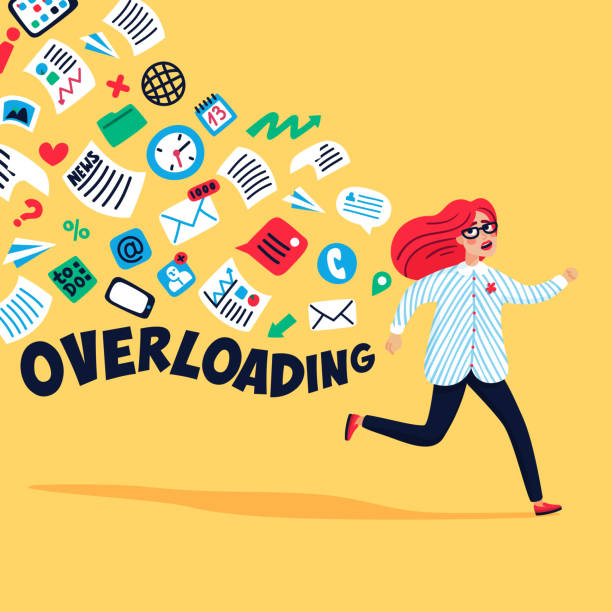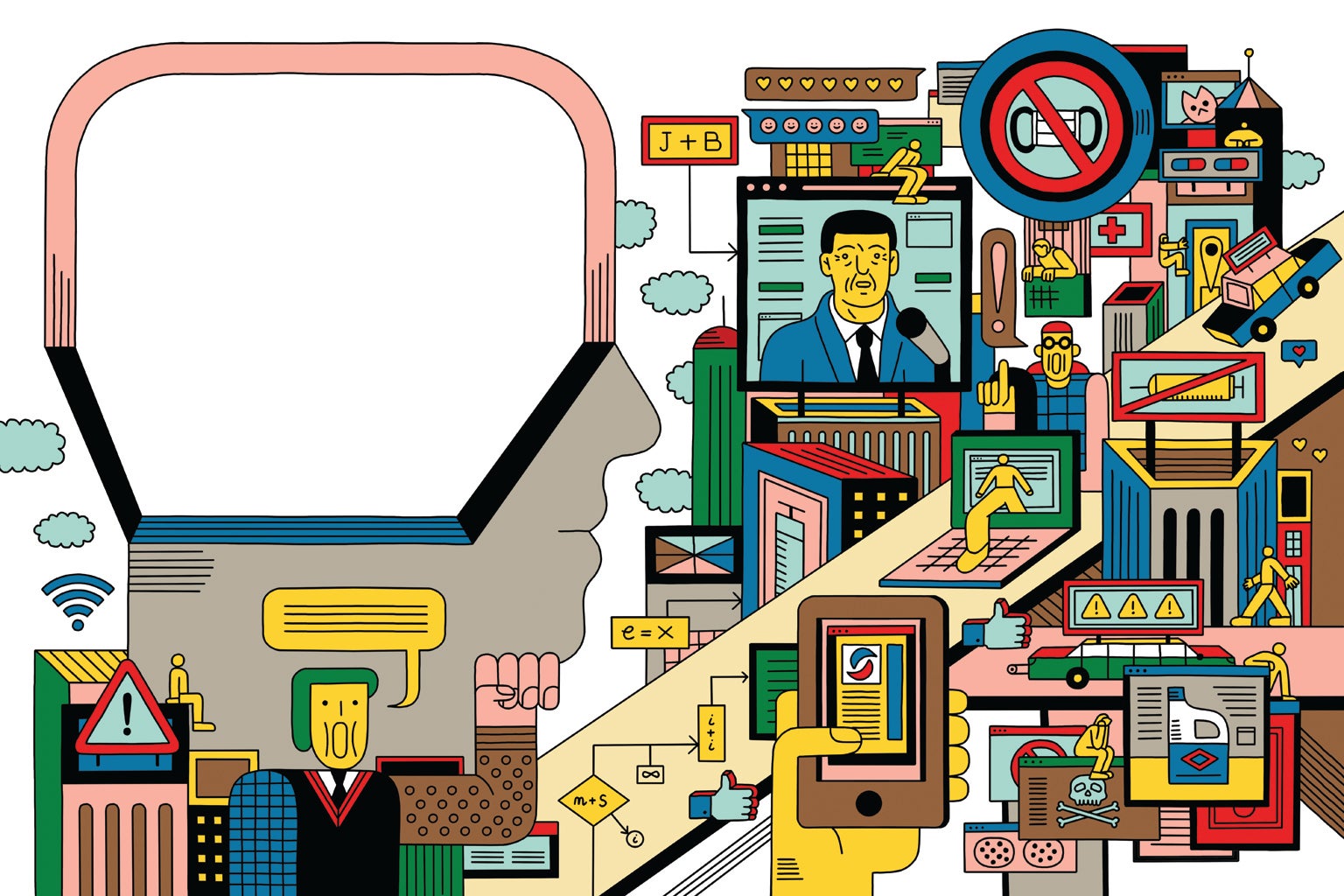
Introduction
Balancing Digital and Real: Navigating the Impact of Internet Connectivity on Social Well-being
Intended Audience and Purpose of the Article:
- Audience: This article targets individuals who engage with the internet on a regular basis, ranging from casual users to those who are deeply immersed in digital environments. This includes people who use the internet for social interaction, professional networking, and information gathering.
- Purpose: The primary goal of this article is to underscore the importance of maintaining a balanced approach to internet use. It seeks to highlight not only the remarkable advantages that the internet offers but also the potential risks and negative outcomes associated with over-reliance on virtual connectivity. By providing a nuanced view of both the benefits and drawbacks, the article aims to encourage readers to reflect on their digital habits and consider strategies for a healthier balance between online and offline interactions.
Overview: The internet has fundamentally transformed the way we interact with the world. It stands as a powerful tool that facilitates global communication, provides unparalleled access to information, and nurtures communities of shared interests and support. Through social media platforms, instant messaging, and online forums, individuals can connect with others regardless of geographic barriers, enriching their personal and professional lives.
However, this powerful tool is not without its downsides. While the internet offers numerous benefits, excessive use and over-reliance on digital connectivity can lead to unintended negative consequences. One significant issue is social disconnection, where individuals may find themselves increasingly isolated from face-to-face interactions and real-world social experiences. This shift can impact the development of essential social skills and strain personal relationships.
Moreover, the mental health implications of excessive internet use are becoming increasingly evident. Constant exposure to curated and often idealized portrayals of others’ lives can lead to feelings of inadequacy, anxiety, and depression. The perpetual cycle of seeking validation through digital interactions can erode self-esteem and contribute to a sense of loneliness.
As we navigate the digital age, it is crucial to understand the balance required to harness the internet’s potential while mitigating its risks. This article will explore how the internet serves as a valuable tool for connection and growth, the challenges of overuse, and strategies for achieving a healthier digital-life balance. By addressing these aspects, we hope to foster a more mindful and reflective approach to internet use, ensuring that it enriches rather than detracts from our overall well-being.

The Internet as a Powerful Tool
Enhanced Connectivity: The internet has dramatically transformed communication, breaking down geographical and temporal barriers that once constrained human interaction. This revolution in connectivity allows people to communicate instantaneously with others across the globe, facilitating both personal and professional relationships.
Revolutionizing Communication: Traditionally, maintaining connections over long distances required considerable effort, such as making international phone calls or sending physical letters. The advent of the internet has streamlined this process, making communication not only faster but also more versatile. Platforms such as email, social media, and instant messaging apps have become integral to our daily interactions. Services like Zoom and Microsoft Teams enable real-time video conferencing, allowing for virtual meetings and face-to-face conversations despite physical separation.
Examples of Platforms and Tools:
- Social Media Networks: Platforms such as Facebook, Twitter, and Instagram allow users to share updates, engage in discussions, and connect with friends and family, no matter where they are located.
- Collaboration Tools: Applications like Slack and Trello facilitate team collaboration and project management, enabling professionals to work together efficiently from different locations.
- Video Conferencing Services: Zoom, Google Meet, and Microsoft Teams provide tools for virtual meetings, making it possible to conduct business, educational sessions, and social gatherings remotely.
Access to Information and Resources: One of the internet’s most profound impacts is its role in democratizing access to information and resources. Previously, acquiring knowledge and educational materials often required physical access to libraries, educational institutions, or specialized resources. Today, a vast array of information is available at our fingertips, accessible from almost anywhere.
Benefits of Online Information and Resources:
- Educational Access: Online platforms such as Coursera, Khan Academy, and edX offer courses and learning materials across a wide range of subjects. These platforms provide opportunities for formal education, skills development, and personal enrichment, often at little or no cost.
- Research and Learning: Academic journals, research databases, and educational websites offer extensive resources for students, researchers, and professionals. Websites like Google Scholar and JSTOR provide access to scholarly articles and research papers, facilitating academic and professional growth.
- Resource-Sharing: Blogs, forums, and online communities allow individuals to share knowledge, experiences, and resources. Websites like Medium and Quora enable users to exchange ideas and seek advice on various topics, contributing to collective learning and problem-solving.
Facilitation of Communities: The internet has also enabled the formation of diverse online communities, providing spaces where individuals with shared interests, experiences, or challenges can connect and support each other. These communities often offer a sense of belonging and can play a crucial role in individuals’ social lives.
Types of Online Communities:
- Hobbyist Groups: Online forums and social media groups centered around specific hobbies, such as photography, gaming, or cooking, allow enthusiasts to share their passion, exchange tips, and collaborate on projects.
- Support Networks: Communities focused on support and mental health, such as Reddit’s various support subreddits or specialized forums for chronic illness or addiction, provide valuable emotional support and practical advice for those facing specific challenges.
- Professional Networks: Platforms like LinkedIn and industry-specific forums enable professionals to connect, share knowledge, and explore career opportunities, fostering professional development and networking.
The internet’s role as a tool for enhanced connectivity, access to information, and community-building underscores its transformative impact on our lives. By bridging gaps in communication and providing access to a wealth of resources, the internet has become an indispensable part of modern society. However, as we continue to leverage these benefits, it is essential to be mindful of the balance required to ensure that digital engagement enhances rather than detracts from our overall well-being.

The Dark Side of Excessive Virtual Connectivity
Social Disconnection:
While digital communication tools have revolutionized how we connect, they also come with significant drawbacks. Over-reliance on these tools can lead to a noticeable decline in face-to-face interactions and the development of real-life social skills. This shift can have far-reaching implications for personal relationships and social competence.
Decline in Face-to-Face Interactions: Digital communication platforms, such as social media and messaging apps, provide convenience and immediacy but often at the expense of in-person engagement. The ease of sending a quick message or making a video call can lead to a reduction in face-to-face interactions, which are crucial for developing and maintaining deep, meaningful relationships. In-person conversations allow for the exchange of non-verbal cues—such as body language, facial expressions, and tone of voice—that are often lost or diminished in digital communication. These cues are essential for effective communication and emotional connection.
Impacts on Relationship Quality and Social Competence: The shift towards digital communication can result in relationships that lack depth and nuance. Over time, individuals who rely predominantly on digital interactions may find themselves struggling with social skills such as empathy, active listening, and conflict resolution. These skills are often honed through direct, personal interactions where subtle social cues and emotional responses are more apparent. As a consequence, individuals may experience difficulties in forming and sustaining meaningful relationships, leading to a sense of isolation despite being constantly online.
Mental Health Implications:
Excessive internet use has been increasingly linked to a range of mental health issues, including depression, anxiety, and loneliness. The pervasive nature of online engagement, particularly through social media, can exacerbate these conditions in several ways.
Links to Depression and Anxiety: Studies have shown a correlation between high levels of internet use and increased rates of depression and anxiety. Social media platforms often present idealized and selective portrayals of others’ lives, which can lead to unhealthy comparisons and feelings of inadequacy. The constant exposure to curated images and success stories can foster a sense of missing out or not measuring up, contributing to depressive symptoms. Additionally, the pressure to maintain an ideal online persona and seek validation through likes and comments can heighten anxiety and stress.
Exacerbation of Loneliness: Despite the appearance of constant connectivity, excessive online engagement can lead to profound feelings of loneliness. The superficial nature of many online interactions lacks the depth and intimacy of real-world connections. Individuals may find themselves interacting with numerous people online but still feeling isolated and disconnected. This paradox of connectivity versus loneliness highlights the potential emotional costs of over-reliance on digital communication.
Behavioral Manipulation:
Digital platforms and algorithms are designed to capture and retain user attention, often leveraging psychological principles to maximize engagement. This manipulation can lead to compulsive behavior and emotional distress.
Exploitation of Attention and Emotional Responses: Algorithms on social media and other digital platforms are crafted to exploit users’ attention and emotional responses. For example, the use of notifications, infinite scrolling, and personalized content feeds keeps users engaged for extended periods. These techniques are based on behavioral data and psychological triggers, such as the intermittent rewards of likes and comments, which can create addictive patterns of usage. The constant bombardment of information and stimuli can lead to cognitive overload and difficulty in disengaging from digital environments.
Impact on User Behavior and Mental Health: The manipulation of user behavior through algorithms can lead to compulsive internet use, where individuals feel a constant urge to check notifications, update social media profiles, or engage with online content. This compulsive behavior can contribute to emotional distress, reduced productivity, and impaired social interactions. Additionally, the emotional rollercoaster of digital engagement—driven by fluctuating levels of online validation and interaction—can exacerbate feelings of anxiety, stress, and low self-esteem.
As we continue to navigate the digital landscape, it is crucial to recognize and address these negative aspects of excessive virtual connectivity. Understanding the potential impacts on social interaction, mental health, and behavior can inform strategies for healthier and more balanced internet use, ensuring that digital tools enhance rather than detract from overall well-being.

Finding Balance: Strategies for Healthy Internet Use
Setting Boundaries:
Establishing clear boundaries around internet use is essential for maintaining a healthy balance between digital and real-world interactions. Here are practical tips for managing screen time and ensuring that digital engagement does not overwhelm other aspects of life.
Practical Tips for Managing Screen Time:
- Implement Time Limits: Use built-in features on smartphones and tablets to set daily limits for individual apps or overall screen time. Many devices offer screen time tracking and control options that can help you monitor and manage your usage.
- Schedule Tech-Free Times: Designate specific times during the day when digital devices are put away, such as during meals, family time, or before bed. This practice can help create space for offline activities and improve overall well-being.
- Create Usage Routines: Establish structured routines for internet use, such as checking emails and social media only at certain times of the day. Consistent routines can prevent impulsive or excessive checking of devices.
Strategies for Scheduling Offline Activities:
- Plan Regular Breaks: Incorporate regular breaks from screens throughout the day. For instance, follow the 20-20-20 rule: every 20 minutes, take a 20-second break and look at something 20 feet away. This can reduce eye strain and encourage physical movement.
- Engage in Hobbies: Allocate time for offline hobbies and interests, such as reading a book, gardening, or playing a musical instrument. Engaging in these activities can provide a fulfilling alternative to digital engagement.
- Create Tech-Free Zones: Establish areas in your home where digital devices are not allowed, such as the dining room or bedroom. This can foster a more focused and intentional approach to offline interactions.
Promoting Real-Life Engagement:
Balancing digital interactions with meaningful real-life engagement is crucial for maintaining strong social connections and overall well-being. Here are ways to foster face-to-face interactions and integrate offline activities into daily life.
Encouraging Face-to-Face Interactions:
- Join Local Clubs or Groups: Participate in local clubs, hobby groups, or sports teams to meet new people and build relationships. These in-person interactions can offer a sense of community and shared interests.
- Volunteer: Engage in volunteer work with local organizations or charities. Volunteering not only provides opportunities for face-to-face interactions but also contributes to a sense of purpose and fulfillment.
- Schedule Regular Meetups: Plan regular meetups with friends and family, such as weekly dinners or monthly gatherings. Prioritize these in-person interactions to strengthen relationships and create lasting memories.
Integrating Offline Social and Recreational Activities:
- Explore Outdoor Activities: Spend time outdoors by hiking, biking, or visiting local parks. Outdoor activities can provide a refreshing break from screens and offer opportunities for physical exercise and relaxation.
- Participate in Community Events: Attend community events, such as local fairs, workshops, or cultural festivals. These events can provide a rich environment for social interaction and engagement.
- Practice Mindfulness: Incorporate mindfulness practices, such as meditation or yoga, into your daily routine. Mindfulness can help you stay present and focused, reducing the urge to constantly engage with digital devices.
Mindful Consumption:
Practicing mindful consumption of digital content involves being intentional about how and what you consume online. This approach can help mitigate the negative impacts of excessive digital engagement and promote healthier media habits.
Setting Goals for Balanced Media Use:
- Define Clear Objectives: Set specific goals for your internet use, such as limiting time spent on social media or focusing on productive activities. Having clear objectives can help you stay focused and avoid mindless browsing.
- Curate Your Digital Environment: Follow and engage with content that aligns with your interests and values. Curate your social media feeds to include positive and enriching content, and unfollow or mute accounts that contribute to negativity or stress.
Being Critical of Information:
- Verify Sources: Always verify the credibility of information before accepting or sharing it. Use reputable sources and cross-check facts to avoid misinformation and enhance the quality of your online interactions.
- Engage in Reflective Reading: Approach digital content with a critical mindset, reflecting on its relevance and impact on your well-being. Take time to question and analyze the content you encounter rather than reacting impulsively.
By implementing these strategies for setting boundaries, promoting real-life engagement, and practicing mindful consumption, individuals can create a healthier balance between their digital and offline lives. This approach can lead to improved social well-being, enhanced mental health, and a more fulfilling overall experience in the digital age.

Conclusion
Recap:
In this article, we have explored the profound impact of the internet as a powerful tool for connectivity, information access, and community building. While digital platforms offer significant advantages, including enhanced communication, educational opportunities, and supportive online communities, excessive reliance on these tools can lead to challenges. We have discussed how overuse of digital communication can result in social disconnection and diminished real-life social skills, the mental health implications of excessive internet use, and the ways in which behavioral manipulation by algorithms can affect user behavior and well-being.
By understanding the potential risks associated with over-reliance on virtual connectivity, it becomes clear that a balanced approach to internet use is crucial. Implementing strategies for managing screen time, promoting real-life engagement, and practicing mindful consumption can help mitigate these negative effects and enhance overall well-being.
Call to Action:
We encourage you to reflect on your internet habits and assess how they impact your daily life and relationships. Consider setting boundaries for digital engagement, prioritizing face-to-face interactions, and being mindful of the content you consume online. Taking these steps can help you achieve a healthier balance between your digital and real-world experiences, leading to improved social connections and mental health.
Participate and Donate to MEDA Foundation:
As you work towards a balanced approach to internet use, we invite you to support the MEDA Foundation’s mission. Our organization is dedicated to fostering self-sufficiency and well-being for individuals, including those navigating the challenges of modern technology. Your participation and donations help us advance our initiatives to create inclusive, supportive environments that promote both personal and community growth. Learn more about our work and how you can contribute at MEDA Foundation.
Recommended Reading:
- “Digital Minimalism: Choosing a Focused Life in a Noisy World” by Cal Newport – This book offers practical advice on how to reduce digital distractions and focus on what truly matters.
- “The Shallows: What the Internet Is Doing to Our Brains” by Nicholas Carr – An exploration of how the internet is reshaping our cognitive processes and mental habits.
- “Reclaiming Conversation: The Power of Talk in a Digital Age” by Sherry Turkle – A look at how digital communication affects our interpersonal relationships and the importance of face-to-face conversations.
- “How to Break Up with Your Phone: The 30-Day Plan to Take Back Your Life” by Catherine Price – A guide to reducing screen time and cultivating healthier phone habits.









